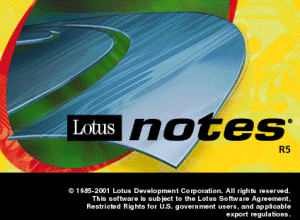 If you’re a veteran of using Lotus Notes and Domino technology when it comes to developing web-based applications, you’ll certainly agree with the platform’s versatility and it’s indispensability in some specific technical areas. Lotus Notes, that became more popular as IBM Notes-after International Business Machines acquired Lotus Development Corporation in 1995-used to be the most widely used tool for developing collaborative apps and publishing portals. However, if you’re still heavily dependent on this platform but want to graduate to using more updated applications-development platforms like Magento, Joomla or WordPress, then it’ll take some time before you can fully migrate.
If you’re a veteran of using Lotus Notes and Domino technology when it comes to developing web-based applications, you’ll certainly agree with the platform’s versatility and it’s indispensability in some specific technical areas. Lotus Notes, that became more popular as IBM Notes-after International Business Machines acquired Lotus Development Corporation in 1995-used to be the most widely used tool for developing collaborative apps and publishing portals. However, if you’re still heavily dependent on this platform but want to graduate to using more updated applications-development platforms like Magento, Joomla or WordPress, then it’ll take some time before you can fully migrate.
And talking about migrations, a majority of these happen to be towards Microsoft and/or Sharepoint. Most individuals are of the opinion that despite the security of sending mails using Notes or Domino, the mail interface of MS Outlook tends to be more user-friendly. The typical mail page of MS Outlook or Sharepoint displays contacts more clearly as well as offers greater convenience in making use of multiple identities in comparison to Lotus’s Notes.
Nevertheless, migration presents users with a good opportunity to reassess and readjust their capacities and processing systems in order to carry out day-to-day business activities more efficiently. However, before you can switch over to using SharePoint, conducting a SWOT analysis of continuing to use the platform of Lotus Notes for your everyday tasks is imperative. You can also consider the scenario where you marry the use of Lotus and Microsoft with a view to bring down overall costs of operation as well as optimize their collaborative use.
The fact that the Notes platform was incredibly adaptable and safe to use made it immensely popular with application developers. Notes, from the beginning and evermore with the later versions like Lotus 3.0, 4.0, 5.0, 6.0, and so on, was perfect for turning ‘chat forums’ and ‘bulletin boards’ into web-based shared workspaces. Then again, databases and applications of Lotus Notes are encrypted or coded which means that these can be accessed exclusively by authorized Notes ID users.
High adaptability of Notes made sure that it could be customized and integrated for use with CSS, JavaScript, HTML5, Python, and PHP for website design and development. Even two decades after its development, Lotus along with Domino, its server equivalent continues to be used by nearly one million users globally.
Although replacing Lotus email with MS Exchange is more or less uncomplicated and clear-cut, one cannot simply while away the migration costs associated with it. Then again, one has to keep in mind the cost of training manpower for getting acquainted with the new process as well as the time it’ll take for making the transition. Irrespective of the route you ultimately take for migration, it’ll take at least 2-3 years for completing the makeover process and for the same to start delivering.
In workplaces and business environments, where Lotus Notes/Domino has been in use for a fairly long period of time, continuing with its use in its present form and scale will be practicable. Notes/Domino is undoubtedly your best bet if your activities tend to be mainly internal where you need to accord a high premium to security of data. For those IT organizations and establishments that generally outsource their tasks, moving away from Lotus Notes and adapting to an updated deployment service platform will be more meaningful.
Image credit: IBM
